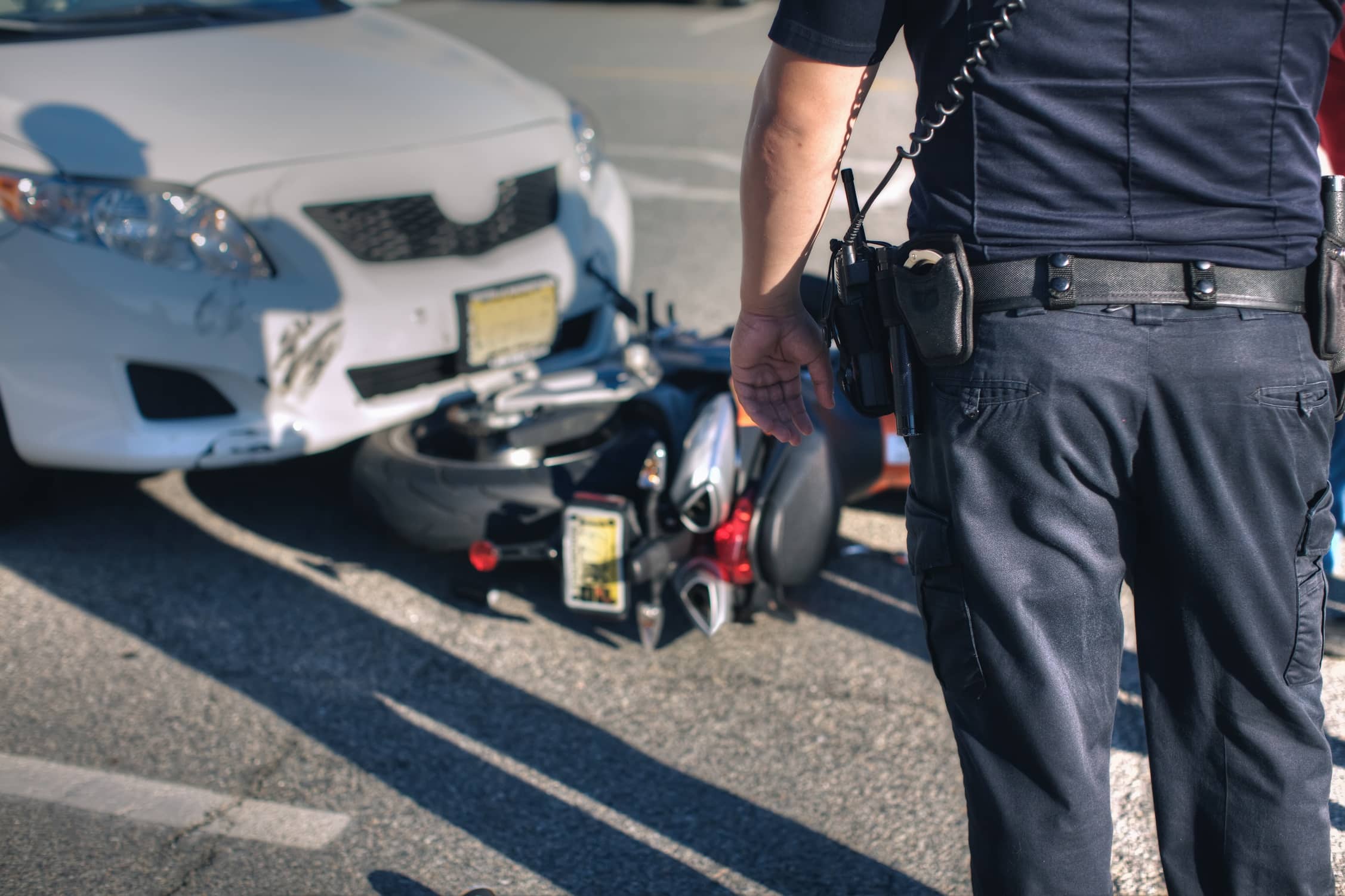Motorcycle accidents, though not necessarily more common than other motor vehicle accidents, can be more shocking and devastating. But, they can also be caused by some unique circumstances. A number of studies and surveys have discovered some interesting facts and statistics about motorcycle accidents:
1. Approximately ¾ of motorcycle accidents involve collisions with another vehicle, most often a passenger automobile.
2. Only about ¼ of motorcycle accidents are single vehicle accidents involving the motorcycle colliding with the roadway or some fixed object in the environment.
3. Vehicle failure accounts for less than 3% of motorcycle accidents, and most of those are single vehicle accidents where control is lost due to a puncture flat.
4. In single vehicle accidents, about 2/3 of the accidents are caused by rider error, typically a slide-out and fall due to overbraking or running wide on a curve due to excess speed or under-cornering.
5. Roadway defects (pavement ridges, potholes, etc.) cause only about 2% of all motorcycle accidents; and animals account for only about 1% of all accidents.
6. In multiple vehicle accidents, 2/3 of the accidents are caused by the other vehicle violating the motorcycle’s right-of-way.
7. The failure of motorists to detect and recognize motorcycles in traffic is the predominating cause of motorcycle accidents. The driver of the other vehicle involved in collision with the motorcycle did not see the motorcycle before the collision, or did not see the motorcycle until too late to avoid the collision.
8. Deliberate hostile action by a motorist against a motorcycle rider is a rare accident cause. The most frequent accident configuration is the motorcycle proceeding straight then the automobile makes a left turn in front of the oncoming motorcycle.
10. Intersections are the most likely place for the motorcycle accident, with the other vehicle violating the motorcycle’s right-of-way, and often violating other traffic controls (i.e., changing lanes, running the light or stop sign, etc.).
11. In 98% of motorcycle accidents, weather does not contribute to the accident.
12. Most motorcycle accidents occur during a short trip associated with shopping, errands, friends, entertainment, or recreation, and usually occurs very shortly after the beginning of the trip.
13. The view of the motorcycle or the other vehicle involved in the accident is limited by glare or obstructed by other vehicles in almost ½ of multiple vehicle accidents.
14. Visibility and conspicuousness of the motorcycle is a critical factor in the multiple vehicle accidents, and accident involvement is significantly reduced by the use of motorcycle headlamps (on in daylight) and the wearing of high visibility yellow, orange or bright red jackets.
15. Fuel system leaks and spills were present in 62% of motorcycle accidents in the post-crash phase, presenting an unusually high risk of fire not present in other types of motor vehicle accidents.
16. The average speed of a motorcycle prior to an accident is 29.8 mph, 21.5 mph at the time of impact, and in only 1/1000 of cases is speed approximately 86 mph at the time of impact.
17. The typical motorcycle pre-crash lines-of-sight to the traffic hazard portray no contribution of the limits of peripheral vision; more than ¾ of all accident hazards are within 45 degrees of either side of straight ahead.
18. Conspicuousness of the motorcycle is most critical for the frontal surfaces of the motorcycle and rider.
19. Vehicle defects related to accident causation are rare and likely to be due to deficient or defective maintenance.
20. Motorcycle riders between the ages of 16 and 24 are significantly overrepresented in accidents; motorcycle riders between the ages of 30 and 50 are significantly underrepresented. Although the majority of the accident-involved motorcycle drivers are male (96%), female motorcycle passengers are significantly overrepresented in the accident data.
If you have been involved in a motorcycle accident that was not your fault, you should contact a personal injury attorney. The attorney will likely be able to provide you with a free consultation and case analysis. A personal injury attorney may be able to help you obtain more relief than you would on your own and can guide you through the process of making claims to insurance carriers of other drivers.
Curated for Ventura Law
Powered by Scroll : Legal Marketing
HG.org



